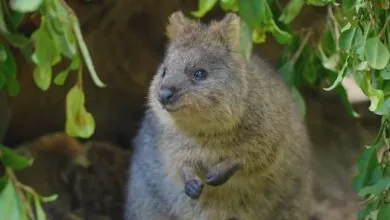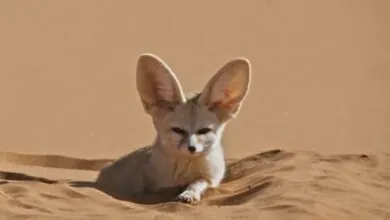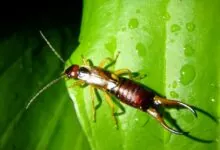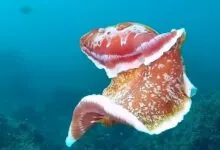Aardvark: Nature’s Ant-Eater with a Remarkable Tongue!
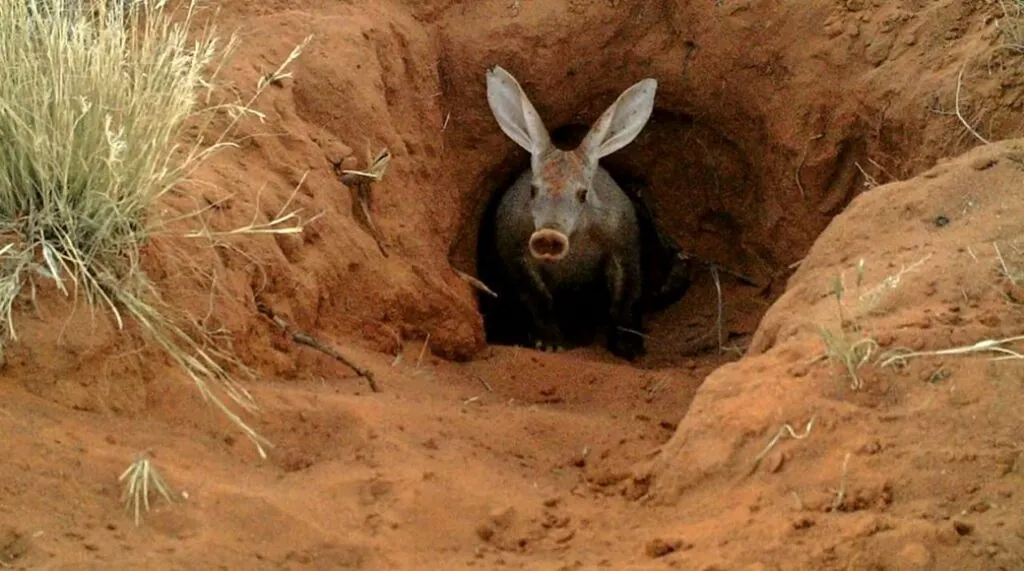
One of the most important mammal in the African ecosystem is Aardvark, also known as Orycteropus afer. It is very unique regarding its appearance i.e. long snout, large ears and tail, and a stout body protected in coarse hair. By making use of its powerful claws and sticky tongue, it gets access to his diet including ants and termites. Its name comes from Afrikaans/Dutch for ‘earth pig’, this is because early Europeans considered it as a resembling animal to pig. However, later it was found that there is no such kind of similarity.
Aardvarks are odd-looking animal with thick hair around its each nostril, protecting their nose during digging. Regarding the term aardvark vs anteater, people had mistakenly considered that it is related to South American Anteater due to its features. However, it is not true! The most resembling animals of Aardvark are elephant shrews, sirenians, hyraxes, tenrecs and elephants.
| Kingdom | Phylum | Class | Order | Genus | Family | Scientific Name |
| Animalia | Chordata | Mammalia | Tubulidentata | Orycteropus | Orycteropodidae | Orycteropus afer |
Origin and Evolution
The aardvark’s origin is connected to the Paleocene era, despite the fact that the particular ancestor species of this mammal are unclear. Similar species were found to have lived on Earth in Africa, Europe, and Asia about 55 million years ago. However, these early animals were more complex and appeared very different from how they do now.
All species continue to branch off and alter their identities as time goes on. It proves that they have a common ancestor and shows that evolution is still active now. However, certain species, like the aardvarks, have remained essentially unaltered from their point of origin until the present. Orycteropus afer is a mammal with the highest evolutionary distinctiveness, according to the EDGE scientific method, because it has developed independently for an extended period of time.
Etymology
Being native to Africa, the common name of Orycteropus afer is a composite of 2 Afrikaans words, aard-meaning ground and vark- meaning pig, giving whole meaning as “Earth Pig.” This can be linked to its digging habits and its pig-like appearance. It can dig burrows by making use of its powerful claws and forelimbs.
This species is placed in the order of Tubulidentata due to its unique characteristics and evolutionary history. Basically, this order name is made of 2 Latin words tubulus- meaning small tube, and dentatus- meaning toothed, referring to its unique dentition.
Distribution
Although aardvark’s habitat and distribution are confined to sub-Saharan Africa and South Africa, it can also be found in other habitats including savannas, grasslands, woodlands and rainforests. Nevertheless, the most favorite places of this mammal are the sandy soils, so that they can dig their burrows there. They are mostly existent in Zimbabwe, Namibia and Botswana, on the other hand, Ivory coast, Ghana, and Madagascar are the countries where their presence is negligible.
Geography
This mammal is mainly found in sub-Saharan Africa and its geographic distribution is extended from Mauritania and Senegal in West Africa, throughout Central Africa, and down to South Africa. However, they can be found in different environments such as savannas, grasslands, woodlands, and even some arid regions. Being primarily nocturnal creatures, they find shelter in burrows during the day to escape the heat and potential predators.
| Continents | Africa |
| Subcontinents | Sub-saharan Africa |
| Countries | Angola, Benin, Burkina Faso, Cameroon, Chad, Congo, Eritrea, Ethiopia, Gabon, Gambia, Kenya, Namibia, Niger, Nigeria, Sierra Leone, Somalia, South Africa, South Sudan, Swaziland, Tanzania, Uganda, Zambia, Zimbabwe |
| Bio-geographical Realms | Afrotropical |
| Biome | Desert and Xeric Shrublands, Flooded grasslands and savannas , Mediterranean forests, woodlands, and scrub, Tropical moist forests, Tropical savanna |
| Climate zone | Tropical, Temperate |
| Habitat | Savannas, Grasslands, Woodlands, Scrublands, Arid and semi-arid regions, Coastal areas |
Population
Population of aardvarks fluctuates across their range in sub-Saharan Africa. Although exact population is not easy to find, but it is found that they have made diverse habitats like savannas, grasslands, woodlands, and arid regions. They are very common in some countries such as South Africa, Namibia, Botswana, Kenya, and Tanzania.
Population Number
Due to the nocturnal and secretive nature, it is tough to find the exact population number of this species. According to the International Union for Conservation of Nature (IUCN), there is no population estimate for this species as it is very common in sub-Saharan Africa. Moreover, this species is categorized as Least Concern (LC) on the IUCN Red List.
Ecological Niche
It is crucial to remember that these pig-like mammals are insectivores, which means that they eat termites and ants while analyzing their ecological niche. It attracts insects to itself with the help of its lengthy, sticky tongue. The majority of their time is spent hunting at night and sleeping in their burrows during the day.
Through their burrowing activities, they contribute to the advancement of biodiversity and have an impact on vegetation patterns. Termite populations are controlled by their food, which also has an effect on the soil’s structure and the vegetation. In addition, hyenas, warthogs, squirrels, hedgehogs, mongooses, bats, birds, reptiles, and many more species find protection in their burrows.
Habitat
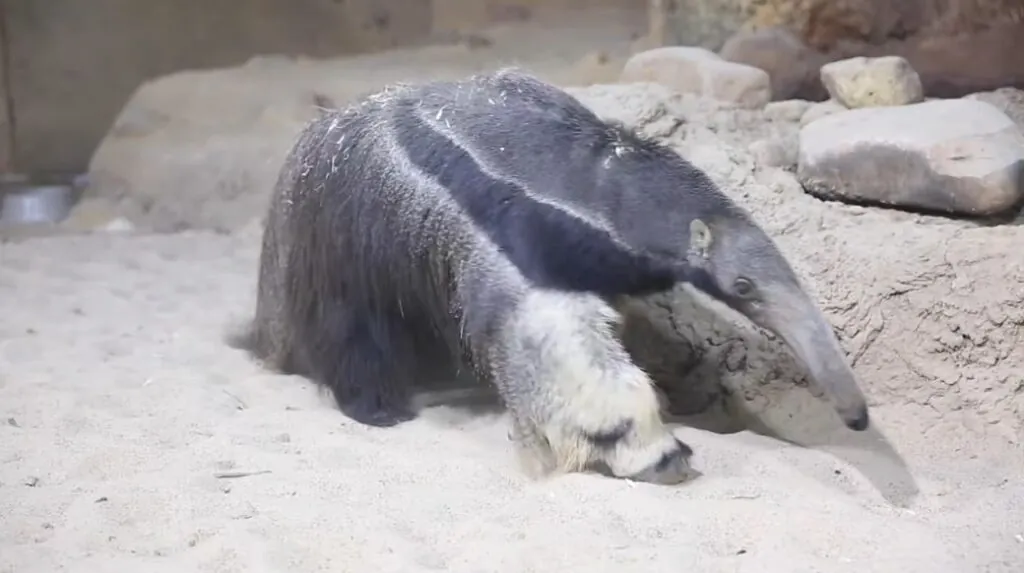
Although this unusual species can be found throughout sub-Saharan Africa, their presence is primarily reliant on the local food supply. For instance, in addition to grasslands and woodlands, they can also be found in deserts and rainforests.
Burrows
They need sandy soil to dig for their food (termites and ants). To shield themselves from the elements and potential predators, they dig underground tunnels that range in length from 6.5 to 9.8 feet (2 to 3 meters) and have many entrances. Their burrow’s end is rounded to promote sleep. The birthing area for female aardvarks is here.
Appearance
Originally, they have a distinct pig-like appearance among mammals because of their long snout. They have the ability to cover their nostrils to prevent insects from entering. They have a medium-sized body and rigid, hairless skin. Their ears resemble rabbit ears, which may be folded to block the passage of dust.
They can dig more easily because their back legs are longer than their front legs. Additionally, despite having rather poor eyesight, they can navigate their surroundings because to their remarkable sense of smell.
Its color, which is primarily grey or sandy-brown due to its existence in many habitats, helps it blend in with its surroundings. It is hidden by this color, making it harder for predators and prey to find it. Its skin is thick and tough, protecting it against insect bites while foraging. Its skin lacks hair, secreting a substance that protects it against ants and termites.
Physical Characteristics
Their physical characteristics are based on its ancient background. Its scientific name Tubulidentata indicates its teeth composed of several straw-like tubes held together without enamel coating and they keep growing. They have shovel-shaped claws for digging, a thick tail, small mouth and a long tongue (30 cm). Of all living mammals, it has the largest number of turbinate bones in its nasal cavity.
| Color | Brown, grey, yellow |
| Skin | Thick and tough, with wrinkled texture |
| Tail | Long and tapering, covered in sparse bristly hair |
| Toes | 5 toes on front feet, 4 toes on hind feet |
| Heart weight | 250 grams |
| Eyesight | Poor eyesight |
| Head | Narrow, elongated snout; small eyes and ears |
| Body shape | Stout and robust, with a large barrel-shaped body |
Anatomy
Along with many qualities, the aardvark has unique anatomy as explained below:
- Tongue – The extremely long and sticky tongue (30 centimeters in length) of aardvarks help them gather food source including termites and ants, by lapping them up with ease.
- Claws – It has sharp and curved claws on front limbs, designed to help in digging. By using these claws, it can create burrows and excavate termite mounds.
- Mouth – Being somehow similar to pig, it has elongated tube-like mouth for efficient suction while feeding. It has no incisor teeth in the front, which provides it more space for the tongue to maneuver within the oral cavity.
- Jaw – A robust jaw helps it break open termite mounds and access the insects inside with strong grip. The lower jaw also has a joint for effective chewing called the temporomandibular joint.
- Teeth – They have large, sturdy cheek teeth called molars to grind the tough exoskeletons of termites and ants. They have no canines and most incisors.
- Nose – Their smelling sense is very sharp due to long and tubular snout. They can close their small nostrils to avoid dust and debris from entering the nasal passages.
- Feet – There are large claws on both the forelimbs and hindlimbs. The forelimbs claws help in digging, while the hindlimbs claws help in climbing out of excavated burrows or defending against predators.
- Skeleton – Its long, slender body is supported by a sturdy spinal column, which aids in its passage through tunnels. The hindlimbs offer stability and support, while the forelimbs and shoulder girdle are designed for forceful digging.
Reproduction and Life Cycles
Depending upon the region of habitation, aardvarks have different mating seasons. Either the newborn is welcomed in October or November, or sometimes May or June after the gestation period of 7 months. The newborn is in pink colored skin without hair, weighing 2 kilograms. It remains with her mother for 2 weeks inside burrows then start learning food search at nights.
The newborn doesn’t eat any solid food until 3 months of birth. In this time, it is fully dependent on his mother’s milk. After the period of 14 weeks, baby starts eating insects like adult aardvarks and at 6 months age, it is able to dig burrows. Male newborns don’t live with their mothers for longer than 6 months, however female newborns live with their moms until next mating season. The average lifespan of aardvark varies between 10 – 23 years.
Mating Habits
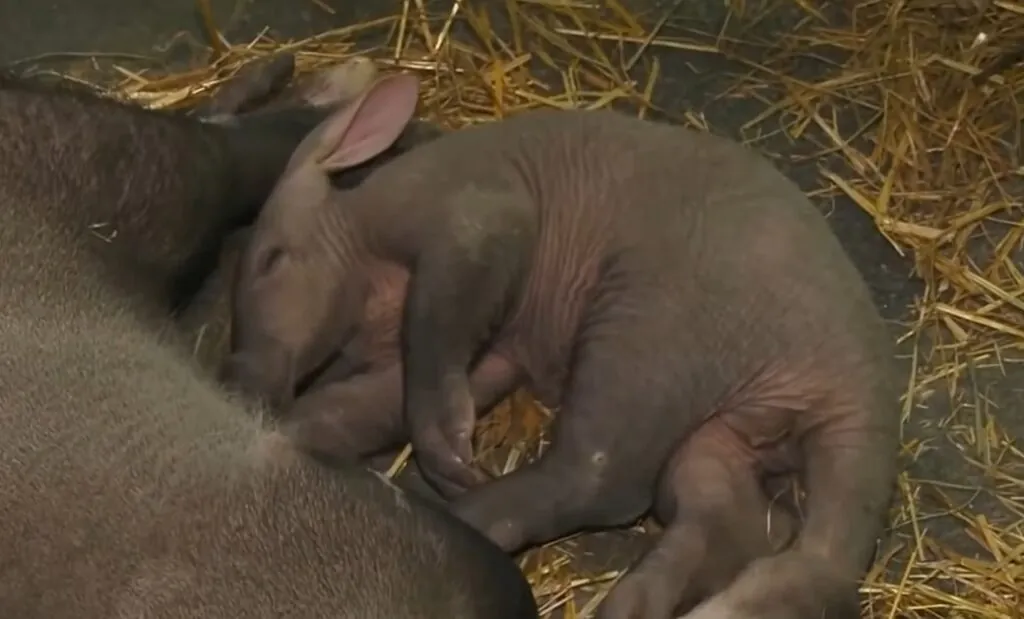
The mating behavior of this insectivore mammal is considered to be Polygynous and they only get socialized during mating season. Their area of residence decides birth months for newborns, for northern Africa, a cub is born in October or November whereas for South Africa, cub gets birth in May or June. The pregnancy period of 7 months is spent inside the burrow and then a single cub is born.
| Mating system | Polygyny |
| Sexual maturity age | 2-3 years |
| Reproductive season | October-November for North Africa, May-June for South Africa |
| Gestation period | 7 months |
| Newborn | Single |
| Period to be independent | 6 months |
| Female partner name | Sow |
| Male partner name | Boar |
| Newborn name | Cub |
Lifestyle
This nocturnal mammal, with unique qualities, eats ants and termites as food and very rarely cucumber, beetles, insect larvae and locusts as they are insectivores. It starts digging when concentration of ants or termites is detected around. It can take 50,000 insects in one night. It remains completely unaffected from the termites stinging attacks due to its tough skin.
They don’t make groups usually and live solitary. They only get closer during the mating season. Moreover, they keep changing its home burrow layout and making new ones. Older burrows are then taken by smaller animals like African Wild Dog. If it gets attacked in the tunnel, then it immediately seals the tunnel off or turn around and attack with its claws.
The aardvark and death adder, though different in their biological classifications, both showcase extraordinary adaptations for survival: the former’s long, tubular tongue for ant and termite extraction, and the other’s venomous fangs as a means of subduing prey in their respective ecosystems.
Prey and Diet
Long time ago (about 35 million years), this mammal started eating termites and ants and its diet ranges to 50,000 insects in one night. It has potential to suck the long colonies of insects (40 feet) by using its nostrils. The focused information about aardvarks is that it traps insects with his long and sticky tongue. To chew the larger insects, incisors is used which is present towards the back of their mouths.
Domestication and Care
It is very uncommon and rare happening to domesticate aardvarks because they love to be in their natural habitats. Moreover, their diet and lifestyle are completely satisfied in wild environment (definitely can’t be provided at homes), for example they need a large area to burrow. Also, they need suitable humidity and temperature level for their existence. Taking all these points into account, it is not considered as a good practice to domesticate them.
Predators, Threats and Conservation
Although this species is not threatened, it has been classified as the Least Concern species by IUCN. On the other hand, it is currently suffering from habitat loss due to agriculture and logging. Moreover, people hunt it for various purposes, as charms, bracelets and curios are made by its skin. Also, its conflict with human is increasing because its burrows are a disturbing factor for dam walls, fences, roads and farming equipment.
Main predators of this insectivore mammal include leopards, large snakes mostly pythons, lions, and hunting dogs. If it feels some threat of predators, it immediately goes into the underground burrows. It can defeat its enemies by running in a zigzag pattern or striking with its claws, tail and shoulder.
The conservation status of Orycteropus afer is a growing matter of concern because of rapid decline in their population. Habitat loss and fragmentation are the major concerns to their existence currently. Various efforts are being done in this regard to protect their habitats. Still, long-term research, community involvement, and habitat conservation strategies are necessary for their well-being. For more fascinating insights into aardvarks, their behavior and conservation status, visit the African Wildlife Foundation.
Defense Strategies
Although they are generally very shy and prefer to avoid confrontation, they have made a few strategies to ward off predators. They are reliant on their strong digging skills to generate complex burrow structures. These underground networks provide them shelter in any dangerous situation. They make multiple entrances and exits of their burrows to defeat their predators.
Their defensive behavior called buffling includes standing on hind legs, opening mouth to display teeth and producing grunts and hisses loudly. This buffling proves very helpful for them to threaten small predators. Moreover, their skin is a strong protection for them against scratches and bites.
Relationship with Humans
Ardvarks are very important species with unique qualities to control the termite population (pests in agriculture land). They spend whole day in their burrows to avoid heat and predators and they search for food only at night. Having nocturnal habitats, they don’t come in contact with humans and also avoid human settlements. Moreover, in few regions people hunt them for meat or their skin (used for various purposes). However, efforts are being made to conserve aardvark populations and protect their natural habitats so that they can survive longer.
The Rundown and Fun Facts
Aardvarks having pig-like appearance with long and sticky tongue has so many features and fun facts you will love to learn about. Let’s discover these facts!
| Common Name | Aardvark |
| Other Names | Antbear, Earth Pig |
| Number of Species | 1 |
| Population size | Unknown |
| Lifespan | 23 years |
| Weight | 60kg – 80kg |
| Length | 3.4ft – 7.3ft |
| Top Speed | 25 miles per hour |
| Predator | Humans, lions, leopards, hyenas |
| Prey | Termites, ants, and insect larvae |
| Favorite activity | Digging for food, Hunting termites and ants |
| Most Distinctive Feature | Can move up to 2 ft of soil in just 15 seconds |
